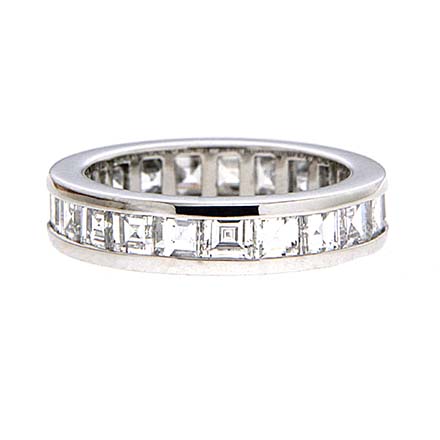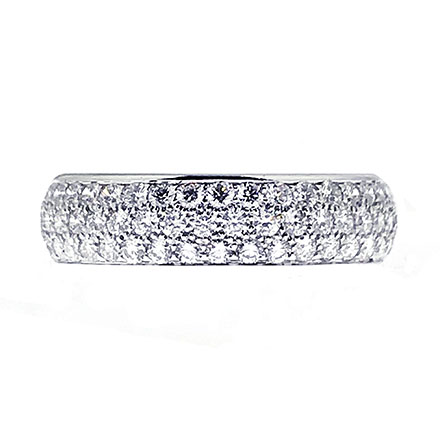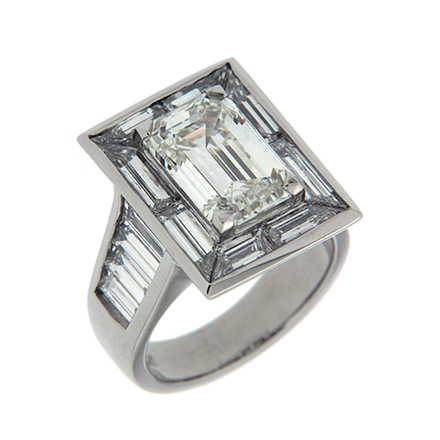There are many ways diamond rings catch the eye. Sometimes it’s unusual color or a skillful cut. Designer engagement rings and wedding bands can make an impression through the use of little gems. Their size allows for a wealth of styles.
The larger the diamond, the higher the demand. Four quarter carat stones are more affordable than a single carat gem. Some jewelers may take advantage of this quirk to cover the band with diamonds. Several settings and cuts are used for this purpose.
Channel settings place diamonds directly in the band. A hollow is carved into the shank and gems are placed inside. The edges of the groove fold over the diamonds, holding them in place. Due to the slim nature of most diamond bands, smaller stones are ideal for this setting.
Pave set diamonds cover a ring’s surface in jewels. The effect is brilliance spread over the band. Miniscule prongs keep attention on the gems. Pave may be used as an accent on diamond engagement rings. It can also be used as the focus, like on micro pave wedding bands.
Baguette diamonds are step cut jewels known for their size and shape. They’re slim like the French loaf, but much smaller. Baguettes are used in pairs to serve as side sides, adding luster to a ring. In groups, they act as halos or form geometric patterns on the band.
Diamond eternity bands are made of gems which surround the entire shank. The jewels are usually the same size and cut, though some may use variety for geometric designs. These may be prong set, channel, or even pave. For the comfort of the wearer, eternity bands use little gemstones.








